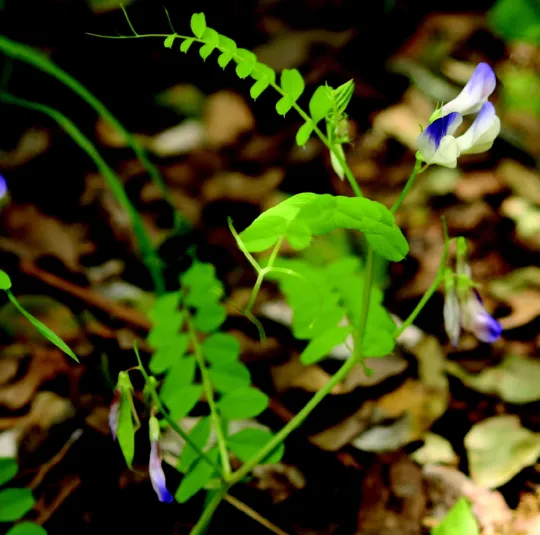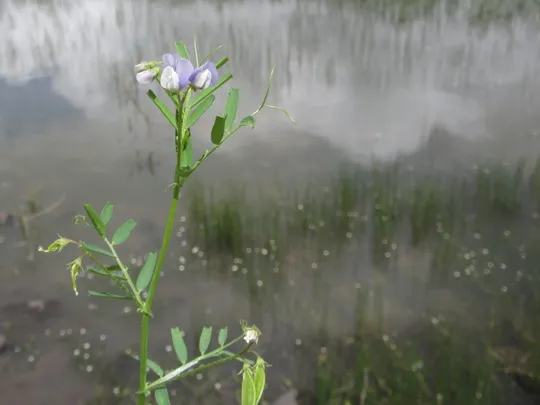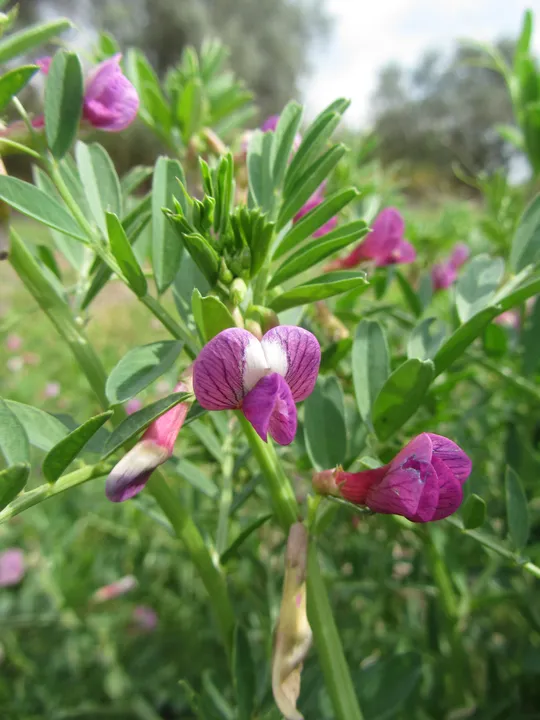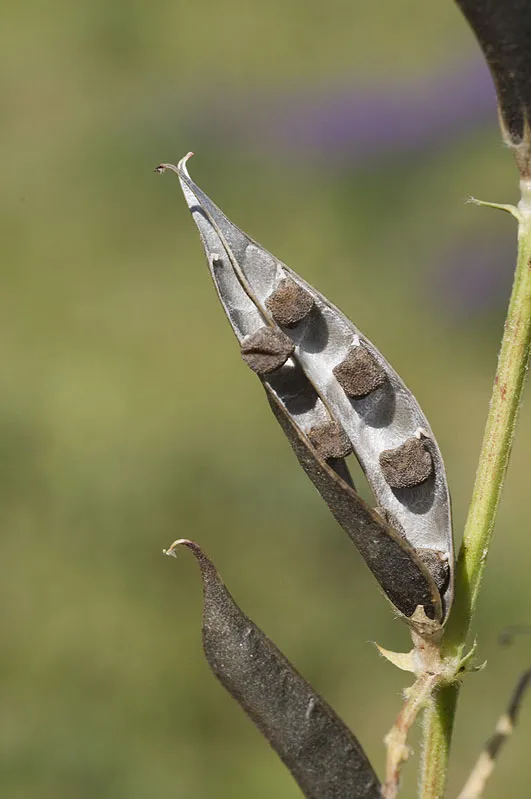Basalt Vetch
Vicia basaltica
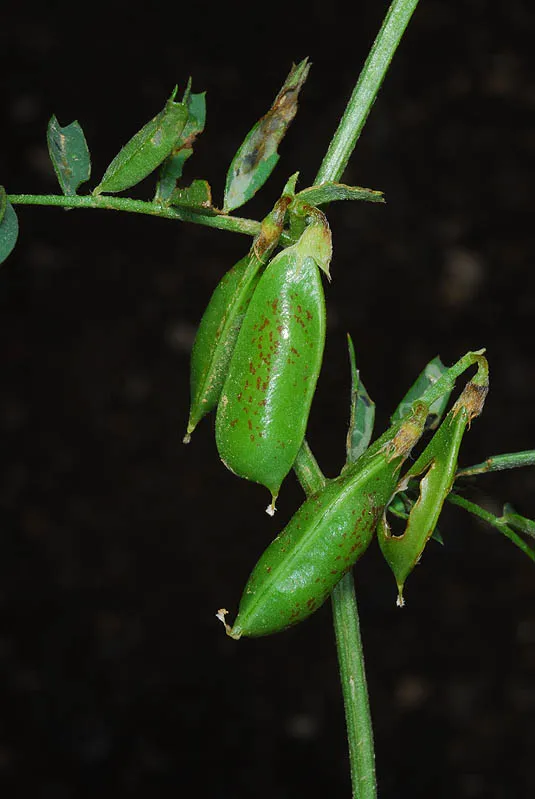
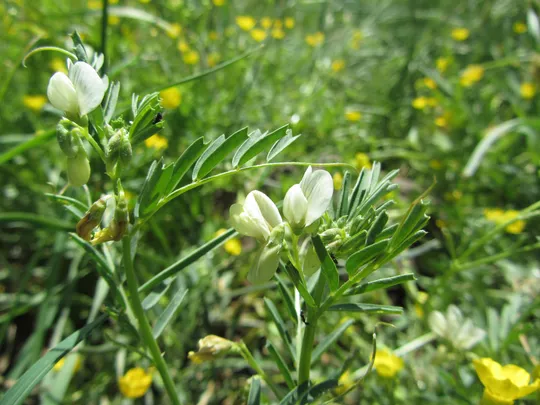
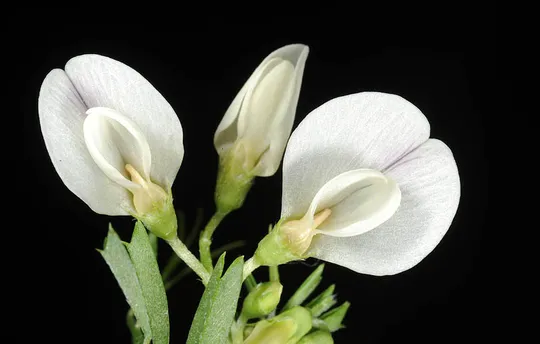
Vicia basaltica is a very rare species, endemic to the Golan Heights, known only from the center of the Golan. As of now, only three sites have been found: Mount Hozek, Alone HaBashan and the Mumsia springs south of Qunetra. In Alone HaBashan, a population of 500 plants was counted. V. basaltica was also observed near Keshet, north of Giv'at Talia.
Moist basalt soils at the edge of sills and eroded valleys at altitudes above 700 meters, usually on soils flooded in winter.
The genus Vicia includes some 150 species, all annual or perennial herbs. The main distribution center of the genus extends over the Mediterranean and southern European countries and the Andean region in America. A few species also grow in temperate areas of North Europe, East Asia and East Africa. Vicia is an economically important plant, used for food (Vicia fava is the fava bean) and especially for fodder. The genus has characteristic pinnately compound leaves, with two or more pairs of leaflets. The leaf axis terminates in a developed tendril or is reduced to a bristle.
Vicia basaltica belongs to the group of Vicia species with an inflorescence of numerous small flowers (3-6 mm). In V. pubescens and V. tetrasperma the pod is narrower than 4 mm and the number of flowers in the inflorescence is small. V. pubescens grows in moist Galilee and Carmel woodlands, V. tetrasperma is a very rare species of heavy soils in the northern valleys. The commonest species in the group is the V. palaestina, which is very common in shrublands, open woodland and fallow fields Israel's Mediterranean region. V. hulensis is the closest species to V. basaltica, a very rare species that grows in heavy basalt soil in the Galilee and the Golan. The last two species are endemic to northern Israel, growing in the eastern terrestrial part of Israel's Mediterranean region, and probably also in southern Syria. V. hulensis has narrow-lobed stipules, unlike those of V. basaltica that are entire (Plitmann 1987). The two species grow together on the Bashanit Ridge.
• In Israel and around the world Vicia basaltica is known from only three sites, all in one section within the boundaries of a very small geographic area, a fact that makes the species globally endangered!
• The number of V. basaltica plants found so far is very small. Some 500 were counted at Alone HaBashan. The entire global population of the species probably numbers no more than a thousand plants.
• The species is associated with a unique habitat, which is threatened by construction and development, as it is suited for construction and agricultural development.
• Access to all V. basaltica sites is easy; the species has a high extinction risk as it is vulnerable to cattle grazing and other agricultural activities.
• Two of the three known sites are included in the Bashanit Ridge Nature Reserve. The third is outside the reserve near Fahem.
- A survey of habitats similar to those of Vicia basaltica should be conducted in the north and center of the Golan, to locate additional populations and to study the distribution of the species in the Golan.
- Two populations in the Bashanit Ridge Reserve should be selected and monitored to study the demography and ecology of this localized endemic species. The ecological and systematical relationship with V. hulensis, V. pubescens and V. tetrasperma should be studied.
- To attempt to communicate with Syrian or European botanists working in Hauran, to attempt to find V. basaltica and to assess its population size.
An endemic species limited to the Golan.
Vicia basaltica is an annual legume, a localized endemic species that was described from the Golan Heights and is still found there to this day, but only in a very limited area on the Bashanit Ridge. Its extreme rarity and the fact that it is a localized endemic species make it one of the most important plant species for nature conservation in Israel.
Plitmann, U. 1987. Vicia basaltica sp. nov. and its relationship to V. hulensis. Israel.J.of Botany. 36:25-30
Current Occupancy Map
| 1000 squre meter pixel | 5000 squre meter pixel | 10000 squre meter pixel | |
|---|---|---|---|
| number of observations | 0 | 0 | 0 |
| in total pixels | 0 | 0 | 0 |
| Family | Fabaceae |
| Classification | On the endangered species list |
| Ecosystem | Mediterranean |
| Chorotype | Eastern Mediterranean |
| Conservation Site | Alone HaBashan |
| Rarity |
1
4
6
|
|---|---|
| Vulnerability |
0
0
4
|
| Attractiveness |
0
0
4
|
| Endemism |
0
4
4
|
| Red number |
1
4.2
10
|
| Peripherality | 0 |
| IUCN category | DD EW EX LC CR EN VU NT |
| Threat Definition according to the red book | Endangered |
 Based on:
Based on:
